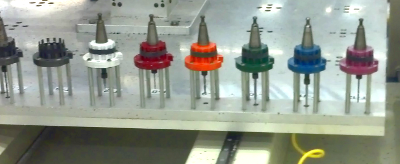The idea that “you always start with 5S”, for better or worse, has been deeply ingrained in the “lean culture” since the late 1980’s. A lot of companies start their improvement efforts by launching a big 5S campaign.
Often, however, these 5S efforts are focused on striving for an audit score rather than focusing on a tangible operational objective.
It is, though, very possible to help bridge the gap by putting the process improvement in 5S terms. By using a language the team already understands, and building an analogy, I have taken a few teams through a level of insight.
For example –
We are trying to develop a consistent and stable work process.
Sort
Rather than introduce something totally new, we looked at the process steps and identified those that were truly necessary to advance the work – the necessary. The team then worked to avoid doing as many of the unnecessary steps as possible. In their version of 5S, this mapped well to “Sort.”
Now we know the necessary content of the work that must be done.
Set in Order
Once they knew what steps they needed to perform, it was then a matter of working out the best sequence to perform them. “Set in order.”
Now we’ve got a standard work sequence.
Sweep or Shine
The next S is typically translated as something like “Sweep” or “Shine” and interpreted as having a process to continuously check, and restore the intended 5S condition.
Here is where a lot of pure 5S efforts stall, and become “shop cleanup” times at the end of the shift, for example. And it is where supervisors become frustrated that team members “don’t clean up after themselves or “won’t work to the standard.”
In the case of process, this means having enough visual controls in place to guide the work content and sequence, and ideally you can tell if the actual work matches the intended work. A deviation from the intended process is the same as something being “out of place.” Then, analogous to cleaning up the mess, you restore the intended pattern of work.
One powerful indicator is how long the task takes. Knowing the planned cycle time, and pacing the job somehow tells you very quickly if the work isn’t proceeding according to plan. This is one of the reasons a moving assembly line is so effective at spotting problems.
Now we have work content, sequence and maybe timing, or at the very least a way to check if the work is progressing as intended. Plan, Do and Check.
I believe it is difficult or impossible to get past this point unless your cleanup or correction activities become diagnostic.
Standardize
The 4th S is typically “Standardize”
Interesting that it comes fourth. After all, haven’t we already defined a standard?
Kind of. But a “standard” in our world is different. It isn’t a static definition that you audit to. Rather, it is what you are striving to achieve.
Now, rather than simply correcting the situation, you are getting to the root cause of WHY the mess, or the process deviation happened.
In pure 5S terms, you start asking “How did this unintended stuff show up here?”
The most extreme example I can recall was during a visit to an aerospace machine shop in Korea many, many years ago. The floors were spotless. As we were walking with the plant manager, he suddenly took several strides ahead of us, bent down, and picked up….. a chip.
One tiny chip of aluminum.
He started looking around to try to see if he could tell how it got there.
They didn’t do daily cleanup, because every time a chip landed on the floor, they sought to understand what about their chip containment had failed.
Think about that 15 or 20 minutes a day, adding up to over an hour per week, per employee, doing routine cleanup.
If you see a departure from the intended work sequence, you want to understand why it happened. What compelled the team member to do something else?
Likely there was something about what had to be done that was not completely understood. Or, in the case of many companies, the supervisor, for his own reasons, directed some other work content or sequence.
That is actually OK when the circumstances demand it, but the moment the specified process is overridden, the person who did the override now OWNS getting the normal pattern restored. What doesn’t work is making an ad-hoc decision, and not acknowledging that this was an exception.
Once you are actively seeking to understand the reasons behind departure from your specification, and actively dealing with the causes of those departures, then, and only then, are you standardizing. Until that point, you are making lists of what you would like people to do.
This is the “Act” in Plan-Do-Check-Act.
Self Discipline or Sustaining
One thing I find interesting is that early stuff out of Toyota talks about four S. They didn’t explicitly call out discipline or sustaining. If you think about it, there isn’t any need if you are actively seeking to understand, and addressing, causes in the previous step.
The discipline, then, isn’t about the worker’s discipline. It is about management and leadership discipline to stick with their own standards, and use them as a baseline for their own self-development and learning more about how things really work where the work is done.
That is when the big mirror drops out of the ceiling to let them know who is responsible for how the shop actually runs.

 These plants are capital intensive, and the main focus of the people is to keep the equipment running.
These plants are capital intensive, and the main focus of the people is to keep the equipment running. 